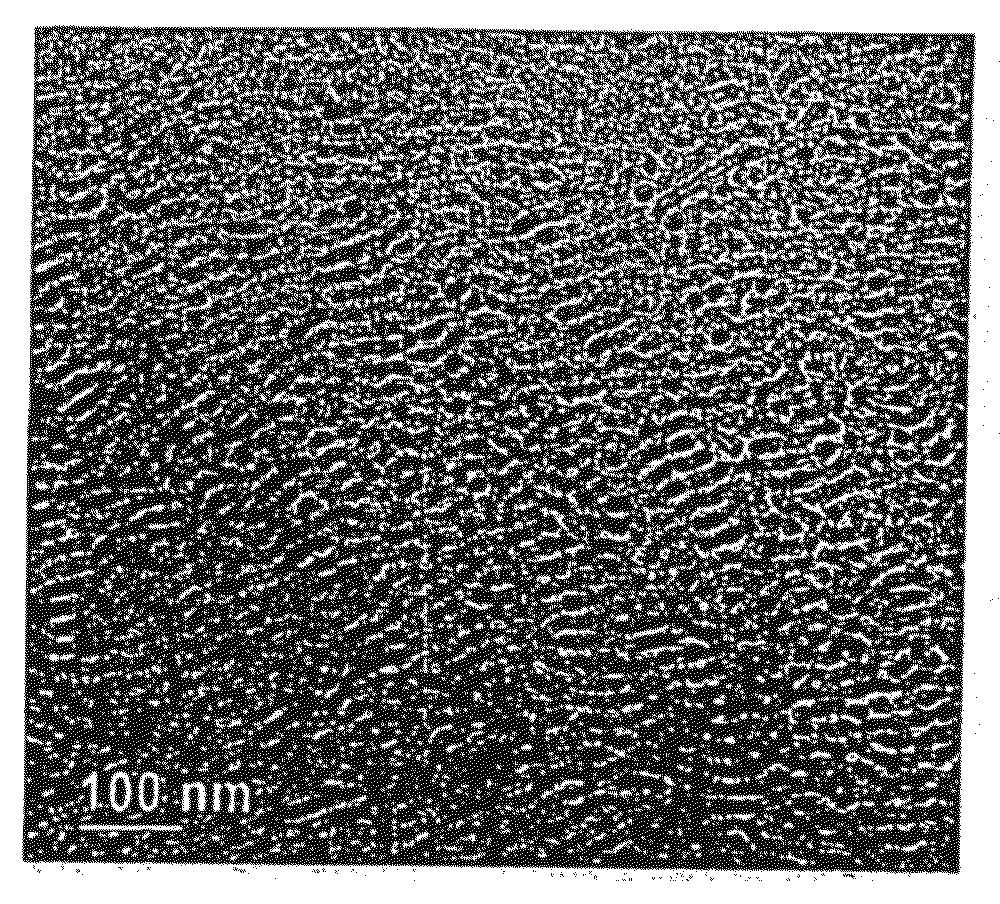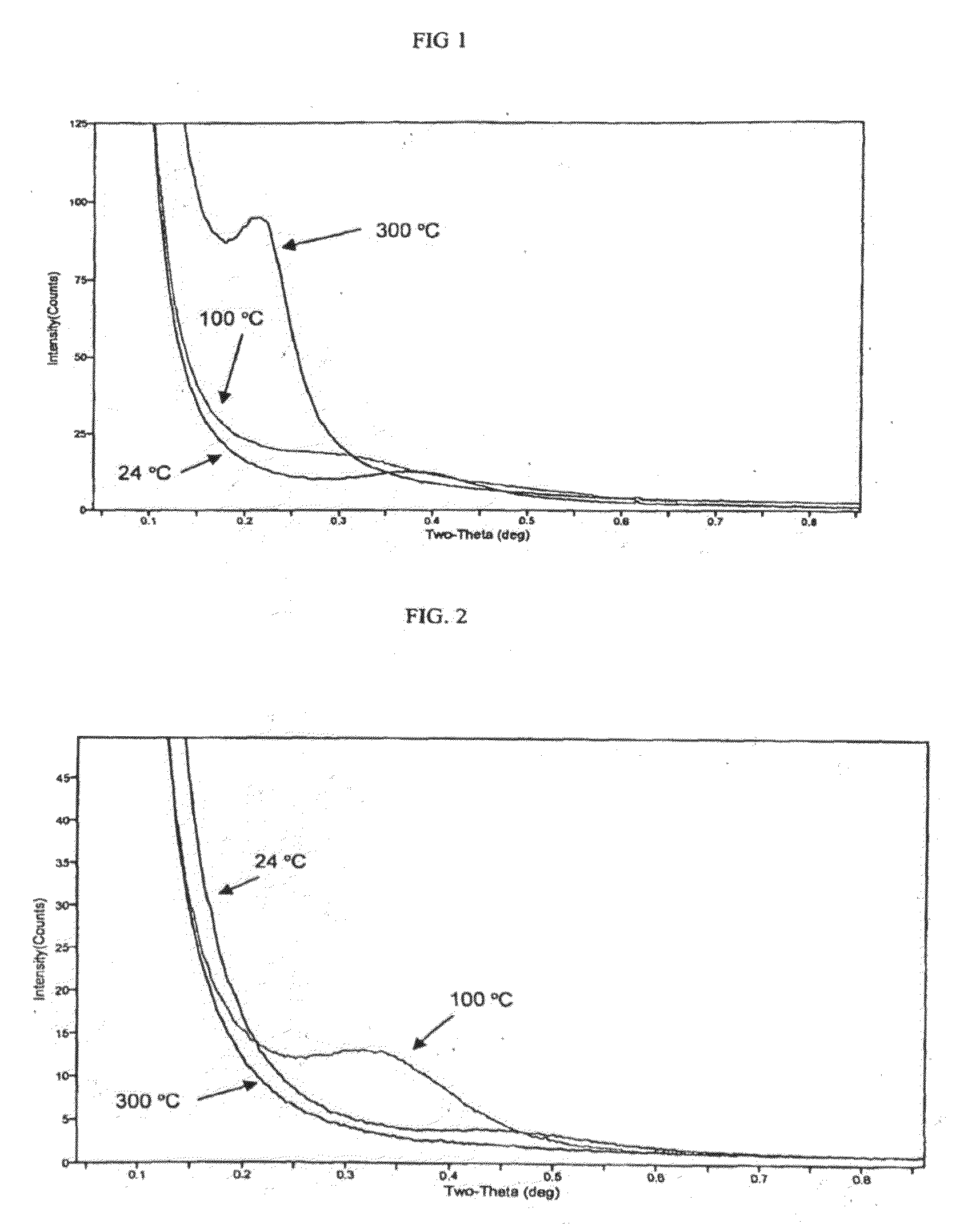Production of meta-block copolymers by polymer segment interchange
a technology of polymer segment and copolymer, which is applied in the field of production of meta-block copolymers by polymer segment interchange, can solve the problems of relatively expensive hydrogenation techniques, inconvenient use, and low ethylenic unsaturation, and achieves improved compatibility of meta-block copolymers, improved clarity, and reduced crystallite size
- Summary
- Abstract
- Description
- Claims
- Application Information
AI Technical Summary
Benefits of technology
Problems solved by technology
Method used
Image
Examples
example 1
[0654]A toluene solution containing 0.25 g each of a partially-hydrogenated polybutadiene (HPBD) and a partially-hydrogenated nitrile / butadiene rubber (HNBR) is warmed to 95° C. and stirred at that temperature until the polymers are completely dissolved. To this stirred solution is added 8 mg of Grubbs II metathesis catalyst. After 1 hour a polymer product is precipitated from the cooled solution by addition of methanol and recovered by filtration. Removing volatile components from the isolated solids under reduced pressure gives 0.45 g of recovered product. SAXS analysis of the recovered polymer shows both HPBD crystalline lamellae and microphase separation indicative of a meta-block copolymer. The microphase separation is evident only at temperatures above the crystalline melting point of the crystalline polymer phase. A graph showing results at three temperatures within the range of the test is shown in FIG. 1. The peak that is observed at 300° C. is evidence of the ordered micro...
example 2
[0657]A tetrachloroethane solution containing 0.25 grams each of unsaturated polyurethane and 0.25 grams poly(ethylene-co-butadiene) is warmed to 105° C. and stirred at that temperature until the polymers are dissolved. To this stirred solution are added 9 milligrams of Grubbs II metathesis catalyst. After 1 hour, a polymer product is precipitated from the cooled solution by addition of methanol and recovered by filtration. Removing volatile components under reduced pressure gives 0.47 grams of recovered product. To the recovered product are added 30 ml tetrahydrofuran, and the resulting mixture is placed on a shaker overnight to extract out non-metathesized unsaturated polyurethane. The polymer remaining after extraction is filtered, dried, and analyzed by FTIR spectroscopy with the results shown in FIG. 3. Intense peaks in the ranges from 1500-1800 cm−1 and 900-1400 cm−1 are indicative of a segment interchange reaction having occurred to form a meta-block copolymer. The IR peaks i...
example 3
[0659]A toluene solution containing 1.05 grams fumaryl-modified polycarbonate and 0.45 grams poly(ethylene-co-butadiene) is warmed to 105° C. and stirred at that temperature until the polymers are completely dissolved. To this stirred solution are added 9 mg of Grubbs II metathesis catalyst.
[0660]After 1 hour, a polymer product is precipitated from the cooled solution by addition of methanol and recovered by filtration. Removing volatile components from the precipitated product under reduced pressure yields 1.37 grams of polymer, TEM analysis of which is shown in FIG. 5 and SAXS data of which are shown in FIG. 6. The TEM of FIG. 5 shows an ordered microphase morphology. The SAXS data of FIG. 5 show a peak at three different temperatures ranging from 25° C. to 300° C. The peak at 300° C. is indicative of ordering in the liquid phase as well as in the non-liquid phases at 25° C. and 100° C. The data support the formation of a meta-block copolymer through a segment interchange reaction...
PUM
| Property | Measurement | Unit |
|---|---|---|
| Tg | aaaaa | aaaaa |
| Tm | aaaaa | aaaaa |
| Tg | aaaaa | aaaaa |
Abstract
Description
Claims
Application Information
 Login to View More
Login to View More - R&D
- Intellectual Property
- Life Sciences
- Materials
- Tech Scout
- Unparalleled Data Quality
- Higher Quality Content
- 60% Fewer Hallucinations
Browse by: Latest US Patents, China's latest patents, Technical Efficacy Thesaurus, Application Domain, Technology Topic, Popular Technical Reports.
© 2025 PatSnap. All rights reserved.Legal|Privacy policy|Modern Slavery Act Transparency Statement|Sitemap|About US| Contact US: help@patsnap.com



